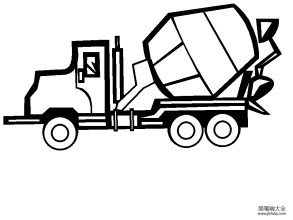Draining the Remaining Water in the Mixing Drum of a Self-Loading Concrete Mixer
- sophieaimix
- Feb 21, 2024
- 3 min read
Self-loading concrete mixers are essential tools in the construction industry, streamlining the process of concrete production and delivery. After completing a job or when transitioning between different types of concrete mixes, it's important to drain any remaining water from the mixing drum to maintain optimal performance and prevent material contamination. In this article, we'll explore the methods and best practices for effectively draining the remaining water in the mixing drum of a self-loading concrete mixer.
Importance of Draining Water
Water is a critical component in the concrete mixing process, facilitating the hydration of cement and the formation of a strong, durable concrete mix. However, excess water left in the mixing drum can dilute the concrete mixture, leading to weakened strength, increased permeability, and decreased durability of the finished product. Draining the remaining water from the

mixing drum ensures that subsequent batches of concrete are mixed to the desired consistency and quality.
Preparation and Safety Measures
Before draining the water from the mixing drum, it's essential to take necessary precautions to ensure safety and prevent accidents. Operators should wear appropriate personal protective equipment (PPE), including gloves, safety goggles, and sturdy footwear. Additionally, ensure that the self-loading concrete mixer is parked on a level surface with the engine turned off and the emergency brake engaged to prevent unintentional movement.
Gravity Drainage Method
The most common method for draining water from the mixing drum of a portable self loading concrete mixer truck is gravity drainage. To begin, position the mixer so that the discharge chute is located at the lowest point of the drum. Open the discharge chute and allow gravity to pull the water out of the drum. Depending on the amount of water remaining and the angle of the drum, it may take several minutes for the water to completely drain.
Tipping the Mixer
In some cases, tipping the self-loading concrete mixer may be necessary to facilitate the drainage of water from the mixing drum. Most self-loading concrete mixers are equipped with hydraulic systems that allow the drum to be tilted or rotated for loading and unloading materials. Tipping the mixer forward or backward can help to ensure that water drains from the drum

more efficiently.
Using a Drain Plug or Valve
Some self-loading concrete mixers are equipped with drain plugs or valves that provide a convenient means of draining water from the mixing drum. To use this method, locate the drain plug or valve on the underside of the drum and open it to release the water. Ensure that a suitable container or drainage area is positioned beneath the mixer to collect the water and prevent spills or environmental contamination.
Flushing the Drum
In situations where residual concrete or cementitious material has hardened inside the mixing drum, it may be necessary to flush the drum with water to loosen and remove the debris. After draining the remaining water from the drum, add clean water and allow the mixer to rotate for several minutes to dislodge any hardened material. Once the drum has been flushed thoroughly, drain the water again to ensure that the mixer is clean and ready for the next batch of concrete.
Conclusion
Draining the remaining water from the mixing drum of a self-loading concrete mixer with a good self loading mobile concrete mixer price is a critical step in maintaining optimal performance and ensuring the quality of concrete produced. By following proper procedures and safety measures, operators can effectively remove excess water from the drum and prepare the mixer for the next job. Whether using gravity drainage, tipping the mixer, or utilizing drain plugs or valves, it's essential to prioritize safety and environmental responsibility throughout the drainage process. With careful attention to detail and adherence to best practices, operators can maximize the efficiency and reliability of self-loading concrete mixers in construction applications.






Comments